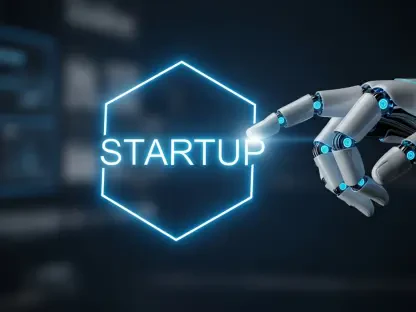Imagine a world where software development cycles shrink from months to mere days, not because of larger teams or longer hours, but due to an AI capable of coding autonomously for over 30 hours straight. This isn’t a distant dream but the reality introduced by Anthropic with their latest innovation, Claude Sonnet 4.5. Positioned as a game-changer in enterprise software development, this AI model promises to transform how businesses approach coding, problem-solving, and workflow efficiency. This review delves into the standout features, performance metrics, and broader implications of this cutting-edge technology, exploring whether it truly lives up to the claim of being the best coding model in the world.
Key Features That Set a New Standard
Unmatched Coding Autonomy
Claude Sonnet 4.5 brings an unprecedented level of independence to software development with its ability to code autonomously for extended periods. Unlike earlier models limited to shorter bursts of productivity, this version sustains focus and output for over 30 hours, significantly boosting development efficiency. Such capability allows complex projects to progress rapidly without constant human oversight, freeing engineers for strategic tasks.
Another notable advancement lies in the “Checkpoints” feature, designed to manage progress during long-term coding endeavors. This functionality enables the model to save and revert to specific stages of a project, ensuring flexibility and reducing the risk of errors during intricate development cycles. It’s a practical tool that supports sustained productivity across extended timelines.
The impact of this autonomy extends beyond mere time savings. By handling repetitive or labor-intensive coding tasks, the model acts as a reliable partner, allowing teams to allocate resources more effectively and tackle ambitious projects with greater confidence.
Real-Time Code Creation and Innovation
One of the most intriguing aspects of this AI is the “Imagine with Claude” feature, currently in preview for select subscribers. This tool facilitates real-time, interactive code generation without the need for predefined scripts, opening doors to spontaneous problem-solving. Developers can iterate ideas on the fly, testing concepts as they emerge during brainstorming sessions.
This capability proves particularly valuable for rapid prototyping, where speed and adaptability are critical. It empowers teams to experiment with creative solutions without the constraints of traditional coding workflows, fostering innovation in high-pressure environments. The potential to turn abstract ideas into functional code almost instantly marks a significant shift in development dynamics.
Moreover, this real-time interaction enhances collaboration between human and machine, bridging the gap between conceptual thinking and practical implementation. It positions the AI as an active participant in the creative process, rather than just a passive tool for execution.
Streamlined Workflow Integration
Seamless integration into existing systems stands as another hallmark of Claude Sonnet 4.5. The model supports direct code execution and handles diverse file types, such as spreadsheets and documents, making it versatile for various enterprise needs. This adaptability ensures that it fits effortlessly into complex development environments without requiring extensive reconfiguration.
A refreshed terminal interface further enhances user interaction by simplifying commands and feedback loops. This update reduces friction in daily operations, allowing developers to focus on core tasks rather than navigating cumbersome interfaces. The result is a noticeable uptick in productivity across teams of varying expertise levels.
Such integration capabilities underscore the model’s role as a unifying force in fragmented workflows. By connecting disparate tools and processes, it creates a cohesive environment where efficiency and clarity drive project success, setting a new benchmark for enterprise AI tools.
Performance Metrics and Competitive Edge
When it comes to raw performance, Claude Sonnet 4.5 stands tall with impressive benchmark results that reinforce its market-leading claims. On the SWE-bench Verified evaluations, it outshines predecessors and rivals alike, while a score of 61.4% on OSWorld for real-world computer tasks marks a substantial improvement over Claude Sonnet 4.0’s 42.2%. These figures highlight a clear leap in capability for handling practical, complex challenges.
Comparisons with competitors, such as models from OpenAI, further cement its dominance in coding proficiency. The data suggests that this AI not only meets but exceeds industry expectations, positioning it as a top choice for enterprises seeking reliable, high-performing solutions. Such metrics validate the bold assertion of it being a leading force in the field.
Beyond numbers, the practical implications of these results are profound. Businesses adopting this technology can expect faster turnaround times on software projects, reduced error rates, and a competitive advantage in markets where innovation speed is paramount. This performance edge translates directly into tangible business outcomes.
Real-World Impact Across Industries
The deployment of Claude Sonnet 4.5 across sectors reveals its transformative potential, particularly in enterprise software development. Integration into platforms like GitHub Copilot, alongside hosting by major providers such as Amazon Bedrock and Google Vertex AI, ensures wide accessibility and immediate applicability. This broad reach facilitates adoption by organizations of all sizes.
Unique applications, such as enabling non-coders to build functional applications, democratize technology in unprecedented ways. Additionally, testimonials from industry leaders, like Sean Ward of iGent AI, praise the model for resetting expectations of AI’s role in development, highlighting its capacity to accelerate cycles and enhance output quality. These real-world endorsements underscore its practical value.
The ripple effects extend into adjacent fields, influencing productivity tools, project management, and quality assurance processes. As companies leverage this AI to streamline operations, the potential for industry-wide shifts in efficiency and innovation becomes evident, paving the way for broader technological advancements.
Challenges and Ethical Considerations
Despite its strengths, Claude Sonnet 4.5 faces significant hurdles that warrant attention. Ethical concerns around AI autonomy, particularly the risk of unintended consequences from extended independent operation, pose questions about accountability and oversight. These issues remain critical as adoption scales across sensitive sectors.
Data privacy emerges as another pressing challenge, with the model’s ability to process vast datasets raising concerns about security and compliance. Ensuring robust safeguards against misuse or breaches is essential to maintain trust among enterprise users. Addressing these risks is a priority for sustained market acceptance.
Additionally, the need for workforce reskilling cannot be overlooked. As AI takes on more coding responsibilities, traditional roles must evolve, requiring training programs to prepare employees for AI-augmented environments. Balancing technological advancement with human adaptation remains a complex but necessary endeavor.
Looking Ahead: Future Possibilities
The trajectory of Claude Sonnet 4.5 suggests exciting possibilities for the evolution of AI in enterprise settings. Potential advancements in autonomy and collaboration could further blur the lines between human and machine contributions, redefining software engineering roles over the coming years. Such developments hint at a future where AI drives entire development pipelines.
The emergence of “AI-first” business models, where operations center around intelligent systems, appears increasingly likely. This shift could unlock unparalleled efficiency, though it demands careful navigation of regulatory frameworks and ethical guidelines to ensure responsible implementation. Policymakers and industry leaders must collaborate on these fronts.
Broader societal impacts, including changes in education and skill requirements, also loom on the horizon. Preparing for an AI-integrated world involves rethinking how talent is cultivated and deployed, ensuring that technological progress aligns with human welfare and equity across global markets.
Final Reflections
Reflecting on the comprehensive evaluation, Claude Sonnet 4.5 proves to be a monumental step forward in enterprise AI, showcasing technical superiority through autonomous coding and seamless integration. Its performance benchmarks establish a new standard, while real-world applications demonstrate tangible benefits for industries hungry for innovation. Challenges around ethics and adaptation linger as critical considerations during its rollout.
Moving forward, businesses are encouraged to explore pilot programs to test its capabilities within specific workflows, leveraging partnerships with platforms like GitHub Copilot for smooth adoption. Simultaneously, investing in employee training to navigate AI-augmented roles emerges as a vital step to maximize benefits. Keeping an eye on evolving safety protocols and regulatory landscapes also becomes essential to address privacy and accountability concerns, ensuring that this powerful tool shapes a balanced and progressive technological future.









